The Google Pixel 4 XL Review: Stuck In The Past In 2019
by Andrei Frumusanu on November 8, 2019 11:30 AM EST- Posted in
- Mobile
- Smartphones
- Pixel 4
- Pixel 4 XL
Display Measurement
The display of the Pixel 4 is one of the phone’s main features thanks to the 90Hz refresh rate. As mentioned in the introduction, the displays on the Pixel 4 series this year is again dual-sourced between LG and Samsung. The regular Pixel 4 receives an LG panel, while the 4 XL that we’re testing and reviewing today, uses a Samsung display.
Android Q promised to have implemented a new iteration of Google’s colour management system, and for the first time, the Photos app is actually able to properly display wide gamut pictures. Unfortunately, it’s still a very limited system in apps as they cannot display differing gamut pictures side-by-side, so for example the thumbnail view is shown only in sRGB. Most importantly, Chrome by default still doesn’t support wide-gamut content as you have to force it in the engine settings, and this implementation doesn’t use the OS’s CMS handling.
We move on to the display calibration and fundamental display measurements of the Pixel 4 XL screen. As always, we thank X-Rite and SpecraCal, as our measurements are performed with an X-Rite i1Pro 2 spectrophotometer, with the exception of black levels which are measured with an i1Display Pro colorimeter. Data is collected and examined using SpectraCal's CalMAN software.

Starting off with the brightness, the Pixel 4 XL is relatively conservative as it peaks out at 438 nits in all scenarios. It’s again very odd here as Google can’t seem to make up its mind on whether it wants to offer an auto-brightness boost or not. Last year, the Pixel 3 only had it available in its Adaptive mode, whilst this year the Pixel 4 doesn’t offer it all, even though the display drivers actually has the high-brightness mode implemented.
In terms of greyscale calibration and accuracy, on my unit things differed greatly based on brightness. At maximum brightness, the Pixel 4 XL was seemingly quite accurate with good colour balance and gamma reproduction. At our standard 200cd/m² measurement point however, things are quite worse. First off, all there’s a more notable colour shift towards greens on the unit which isn’t great. Following that, there’s also creeping issues with the gamma calibration as it’s non-linear and deviates a lot more from the 2.2 target. What this results in is some shades, especially at the higher levels, appear darker than they should be.
I’ve also noted and captured some sort of bug in the display behaviour; when I was measuring at minimum brightness, I encountered some really bad results. I’ve seen this mentioned by some other reviewers and the issue went away when I toggled the screen refresh rate. The odd thing though, is that I wasn’t able to immediately reproduce it afterwards and results on the new measurements were quite ok. The colour shift the phone took was extremely noticeable at the time the bug took place.

SpectraCal CalMAN
"Natural" Greyscale colours

In terms of dE2000, the biggest culprit to the average 2.29 result for me is the green tint of whites as well as the slightly off gamma.
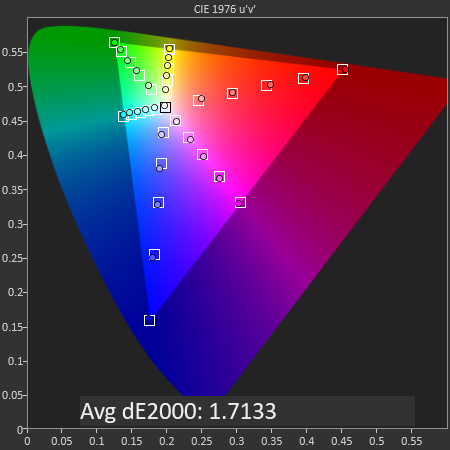
SpectraCal CalMAN
sRGB Gamut
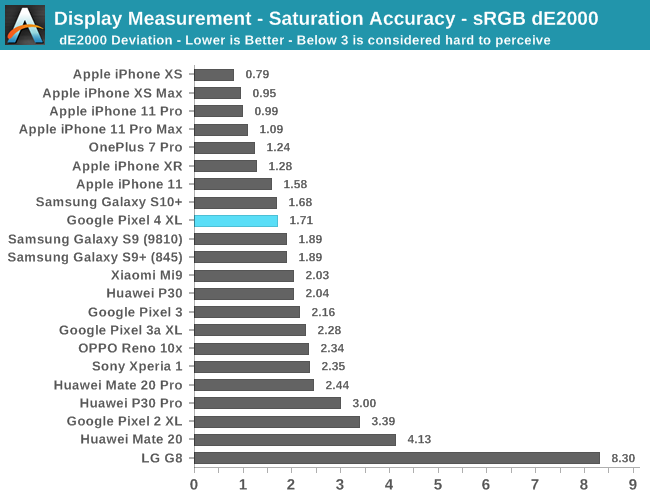
In the sRGB gamut, the Pixel 4 XL does well with a dE2000 of 1.71. The biggest issue again is a shift in the tones towards green, but also seemingly very slight oversaturation of all the tones.
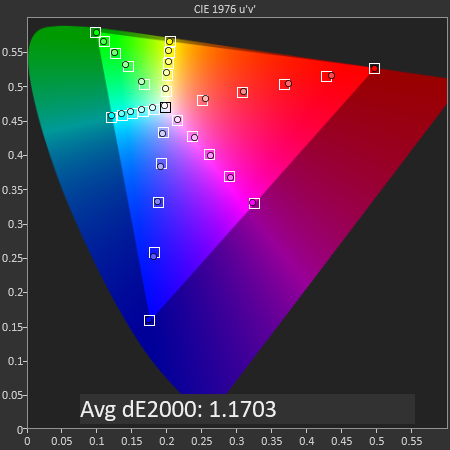
SpectraCal CalMAN
Display P3 Gamut
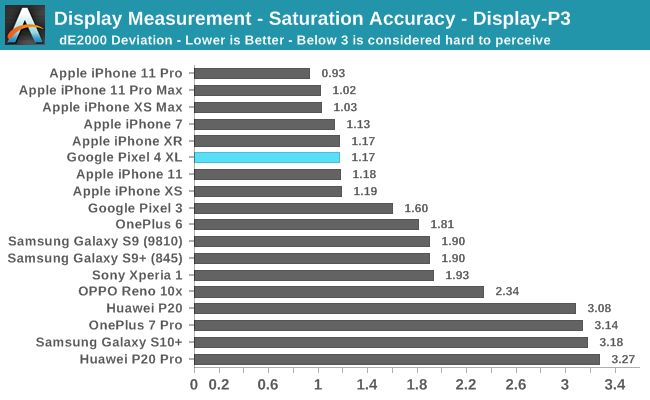
The Display P3 gamut performs a lot better. Here while the green tint is still present, the saturation levels are better and thus the Pixel 4 XL ends up with an excellent dE2000 of 1.17.

SpectraCal CalMAN
Gretag-Macbeth

Finally, in the GMB test, the Pixel 4 XL ends up quite average with a score of 2.34 as it’s showcasing tones that are too dark, a green tint in the whites, with some hue errors for a few tones.
Display Conclusion – Good, but not A+
Overall, the Pixel 4 XL’s display characteristics beyond it’s 90Hz refresh rate are quite average. Whilst Google has been able to improve the calibration compared to what we measured on the regular Pixel 3 last year and the 2 XL the year before that, it’s still quite a bit behind what some other vendors are able to achieve. The display’s lower brightness is also a bit of an issue in direct sunlight as it lacks any kind of boost behaviour. Finally, the remaining characteristics such as viewing angles and sharpness are excellent, but that’s just generally a common characteristic of panels with these specifications.
The results today aren’t really a surprise to me given Google’s track record with the displays on the Pixel series, however it does stand in contrast to what the company was proclaiming at launch: “A+ rating Best Smartphone Display Awards” really doesn’t mean anything at all if, first of all, it’s a sponsored award, and secondly, if the measurements aren’t representative of a random production unit. Make of it what you will.


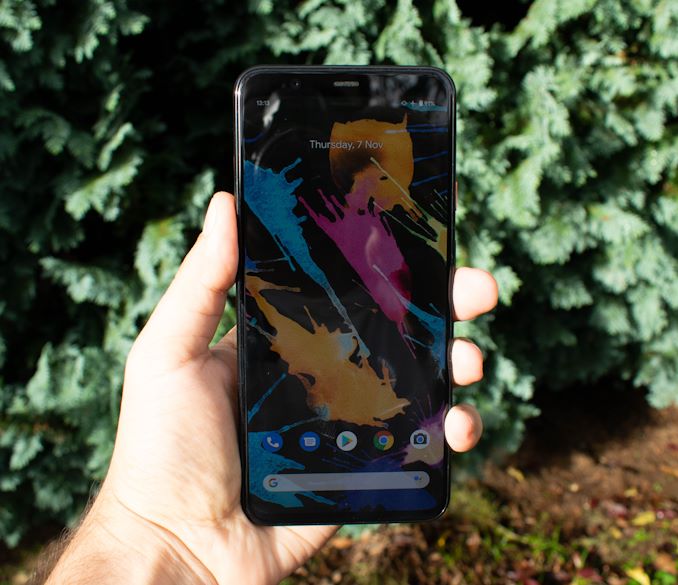
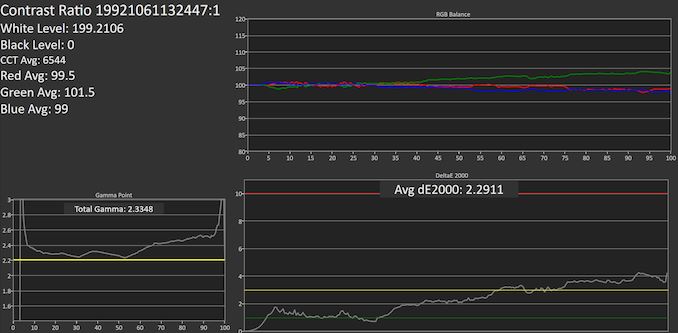
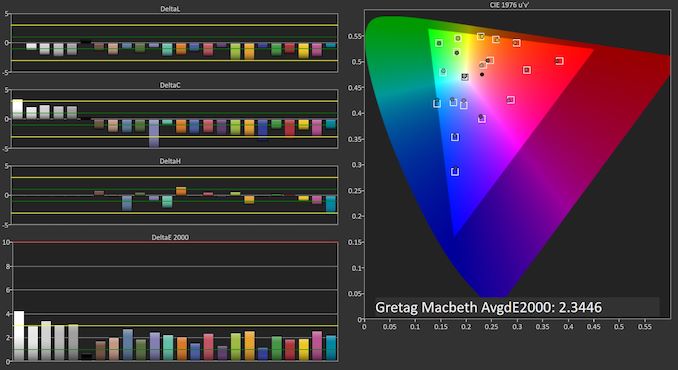








159 Comments
View All Comments
dudedud - Friday, November 8, 2019 - link
> rarely see utilization go beyond 900MB on my current phoneAre you using just one app or do you still have a 1GB phone?
PeachNCream - Friday, November 8, 2019 - link
The phone has 2GB of RAM. I use a lot more than one app at a time.Oliseo - Sunday, November 10, 2019 - link
You can't possibly if you're only using less than 1Gb.PeachNCream - Sunday, November 10, 2019 - link
I don't understand why that's so impossible. My prior phone had 1GB and hovered around 600MB utilization with occasional need for up to 750MB. Both my current phone and my prior one saw/see heavy use as a stand-in for my laptop at times when I can't be bothered to turn it on so everything from working on a few documents to gaming have fallen to my phones. On the other hand, I find it odd that people feel RAM-limited at 4GB or would be worried that the next couple of years using a Pixel 4 would push 6GB to its limits.s.yu - Sunday, November 10, 2019 - link
It's perplexing what phone you're using.My S6E eats more than 1GB on a clean boot, and easily surpassed 2GB even in the past when it was still supported. Now it's about a year since it's last update and it could only juggle 2 apps maximum, with lag, and system animations already off. Any additional apps and the oldest will be terminated, not to mention certain popular and well-maintained apps that are just a glorified browser (I'm talking about Taobao and the sort) will only run half-smoothly(it would sometimes get stuck for 3-5 seconds, which was very rare on my Note8) with all background apps terminated, I don't know about hidden processes but in my experience Samsung's app manager puts those to sleep as much as possible, since it puts even active apps to sleep resulting in me missing notifications from almost all apps, only SMS, call, alarm, and occasionally the calendar break through.
I could only tolerate S6E's performance because it's a backup device I only use for occasional communications and shopping, yet it still can't smoothly handle these light loads.
Spunjji - Monday, November 11, 2019 - link
Your RAM usage looks low specifically because you don't have much RAM. With only 2GB of RAM to go around, your apps will be being suspended and thus not running simultaneously.For comparison - my OnePlus 6 has been used for the browser, Signal and WhatsApp so far today and is sitting at 3.7GB of RAM usage.
StormyParis - Friday, November 8, 2019 - link
Very informative thank you; especially the real-life pictures from almost all current flagships.I've jumped off the flagship bandwagon several years back. I'm curious how more reasonnably-priced handset (Redmi Note 10 especialy) would fare.
id4andrei - Friday, November 8, 2019 - link
Great review Andrei but I have some questions regarding the benchmarks in general.First, on the GPU section, how do you corroborate the massive discrepancy between 3dmark GRAPHICS and the GFXBench series of benchmarks? I mean, on the former, the A series GPU seems on par with the competition, but on the latter the A series GPU is orders of magnitude better. I would interpret it that the difference is actually not between the GPUs but between the API implementations, GFX runs in Metal on ios and in Vulkan on android. Am I correct to read it this way?
Secondly, on the CPU side, referencing 3dmark PHYSICS, the A-series actually does not keep up with the competition. Now don't get me wrong, I understand that A13 is the most complex mobile CPU on the market, biggest and most expensive die. I also understand your testing with SPEC in an active cooled scenario. It clearly shows the quality of the design, desktop class arch. On the bursty side, the A13 is also on top, referencing Geekbench and other short benches. Why is the 3d mark PHYSICS the Achilles' heel? Talking "phones in hand", past the burst time interval, is Snapdragon able to sustain its performance better and higher than A13?
Andrei Frumusanu - Friday, November 8, 2019 - link
Adrenos performing well in the 3DMark GPU test might be related to some corner case and their microarchitecture does well there.Similarly, the physics test might have some prefetcher or inter-core dependency limitation that doesn't fare well on Apple's CPUs.
id4andrei - Friday, November 8, 2019 - link
Thank you for the prompt response. On the GPU, if I may, similarly with how javascript tests are also about browser engine optimizations in addition to hardware, isn't the difference between Vulkan and Metal as implemented in their respective OS, an academic asterisk on GFX numbers?